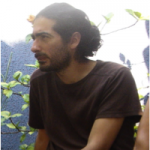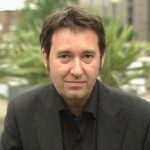Lien vers Pubmed [PMID] – 22699619
Lien DOI – 10.1038/nature11015
Nature 2012 Apr; 486(7402): 256-60
Autism spectrum disorders comprise a range of neurodevelopmental disorders characterized by deficits in social interaction and communication, and by repetitive behaviour. Mutations in synaptic proteins such as neuroligins, neurexins, GKAPs/SAPAPs and ProSAPs/Shanks were identified in patients with autism spectrum disorder, but the causative mechanisms remain largely unknown. ProSAPs/Shanks build large homo- and heteromeric protein complexes at excitatory synapses and organize the complex protein machinery of the postsynaptic density in a laminar fashion. Here we demonstrate that genetic deletion of ProSAP1/Shank2 results in an early, brain-region-specific upregulation of ionotropic glutamate receptors at the synapse and increased levels of ProSAP2/Shank3. Moreover, ProSAP1/Shank2(-/-) mutants exhibit fewer dendritic spines and show reduced basal synaptic transmission, a reduced frequency of miniature excitatory postsynaptic currents and enhanced N-methyl-d-aspartate receptor-mediated excitatory currents at the physiological level. Mutants are extremely hyperactive and display profound autistic-like behavioural alterations including repetitive grooming as well as abnormalities in vocal and social behaviours. By comparing the data on ProSAP1/Shank2(-/-) mutants with ProSAP2/Shank3αβ(-/-) mice, we show that different abnormalities in synaptic glutamate receptor expression can cause alterations in social interactions and communication. Accordingly, we propose that appropriate therapies for autism spectrum disorders are to be carefully matched to the underlying synaptopathic phenotype.




